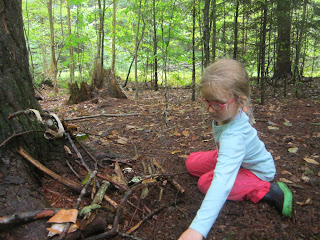During our first two weeks of school much of our time has been spent on developing a classroom community in which all children feel safe and welcome, feelings that are essential for learning. We have talked about our school-wide expectations - be kind, safe, responsible, and engaged - and brainstormed what each of these looks like in kindergarten.
For young children, a critical first step in demonstrating these expected behaviors is developing an awareness of their own feelings and emotions. In the first few weeks we have been talking about the Zones of Regulation, four categories or "zones" used to categorize different emotions people experience: blue, green, yellow, and red. Green is optimum. People in the green zone might be feeling happy, calm, or focused. Blue is running slow-perhaps tired, sick, or sad. Yellow represents caution-frustrated, overwhelmed, silly, worried, or anxious. Finally the red zone is for extreme emotions and feeling out of control- terrified, angry, or completely overwhelmed. This is language that will be used across school settings.
To help us practice identifying the zones we read the book
On Monday When It Rained... by Cherryl Kachenmeister, which describes the range of feelings for one boy in a given week, and emphasizes that all people, even adults, cycle through various emotions every day, and that is okay. We also read the book
Sometimes I'm Bombaloo by Rachel Vail. Ask your child to tell you what it means to be bombaloo. We talked about that fact that everyone feels bombaloo sometimes (even adults) and discussed strategies for calming down when we are feeling bombaloo. A third book we used to examine feelings is
The Way I Feel, by Janan Cain, a rhyming book that portrays children feeling a wide range of emotions. For each page we talked about what zone the child might be in and things they might do to move toward the green zone if they were in a different zone. Some strategies include taking deep breaths, finding a space by ourselves, getting a drink of water, counting to five (or higher), using our fingers for sa ta na ma (perhaps your child can show you this) or using a calming object.
We have worked on creating a box of tools that children can access when they are not in the green zone. Some of the tools in our box right now include drip toys, a balance bird, small stuffies, squish balls, and theraputty, which is a favorite. We have a sand timer with the tools, providing a set amount of time for children to be away from the class. It has been important to distinguish these tools from toys and we have spent time practicing using them appropriately as intended.
Identifying feelings and managing emotions are lifelong skills that take lots and lots of practice and we will continue our work in this area throughout the year in class, during guidance with Katie Babic, and across school settings.






















































